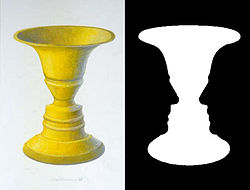Mindfulness
Across all cultures and all people, the common thread among people who experience high levels of wellness seems to be the ability to be mindful. “Mindfulness is the ability to actively pay attention to the present moment and acknowledge and accept feelings without judging them as “good” or “bad” (Parkes & Kelly, 2014).
The ability to be mindful increases emotional wellbeing, confidence, resilience, focus, concentration, kindness, emotional intelligence, awareness and attention. Mindfulness improves stress response, decision-making and problem-solving abilities as well as creativity, interpersonal relationships and communication skills. The development of mindfulness greatly increases the ability to achieve significant improvements across all 8 Pillars of Wellness.
We are not talking about mindfulness in a spiritual or “new-age” sense. It needn’t be about meditating for hours or connecting with spirit, although it can be. Rather, we invite you to view mindfulness as a way of being present in a world that bombards us with upwards of 120,000 sensory inputs per day. Our brains are designed to keep us alive; to constantly monitor our environment for threats to our personal safety, filtering out anything that it deems unnecessary to our survival. This process of filtering process deprives us, however, of many valuable thoughts that may impact our wellbeing.
In his book Breaking All the Rules, Kurt Wright writes: “Have you ever noticed how easy it is to look back on events that happened a year or more in the past and see the perfection in them? For most of us this is true even for situations which seemed tragic, horrible or even devastating at the time. Now, if it is possible to see the perfection in those things a year later, doesn’t it make sense that the perfection must be there in the moment it happens too?”
When we are overwhelmed or are going through a difficult time, our thoughts are dominated by the negative situation and we often lose sight of the many positive things that are simultaneously occurring. Mindfulness allows us to step back and notice the perfection that exists in those difficult moments.
Consider Rubin’s illusion: most of us have seen this before.
|
This Photo by Unknown Author is licensed under CC BY-SA |

When you look at this picture, what do you see? Some people see a vase, others see a face. Our brain can only see one or the other at a time. If you see the face, try to see the vase. If you see the vase, try to see the face. For most of us, it takes quite a bit of effort to change our perspective.
If you find that you are able to see one, then the other, try shifting your focus back to the first thing you saw. You may find that it is even more difficult to regain your original perspective. Keep switching back and forth, however, and you will find it becomes easier and easier to see either perspective.
Rubin’s illusion teaches us a couple of things about mindfulness; for most people it is difficult to be aware of something that is outside of our immediate focus. We really need to make an effort to see things from a new perspective, regardless of how ‘open-minded’ we believe ourselves to be. The more we practice changing our perspectives, the easier it becomes. In time we become able to see whatever we choose to see; the face or the vase.
Mindfulness practice allows us to first be aware that there is both a face and a vase, and then to see each one as a piece of the whole. How does this relate to wellness? In any area of wellness, in order to make improvements we must first be able to recognize a need to change. For many people, recognition only comes after a crisis hits; a medical emergency, a failing grade or a financial disaster. Living mindfully allows us to notice and act on circumstances long before we arrive at a crisis.
Here are some short and simple mindfulness exercises that you can try.
Ethical considerations: In all dealings with service users it is important to consider the standards of practice under which we operate. Within our scope of practice, we provide “assessment, diagnostic, treatment and evaluation”. To do this we participate together with clients, we “observe, clarify and inquire about information presented by clients”, we “respect and facilitate self-determination” and “demonstrate acceptance of each client’s uniqueness”. We also are compelled to be “aware of our values, attitudes and needs and how these impact on professional relationships with clients” while distinguishing our needs and interests from those of the clients to “ensure that, within professional relationships, clients’ needs and interests remain paramount”. Principle 1, “Relationship With Clients”, requires us to competently practice mindfulness in the service of our clients.
Resources
